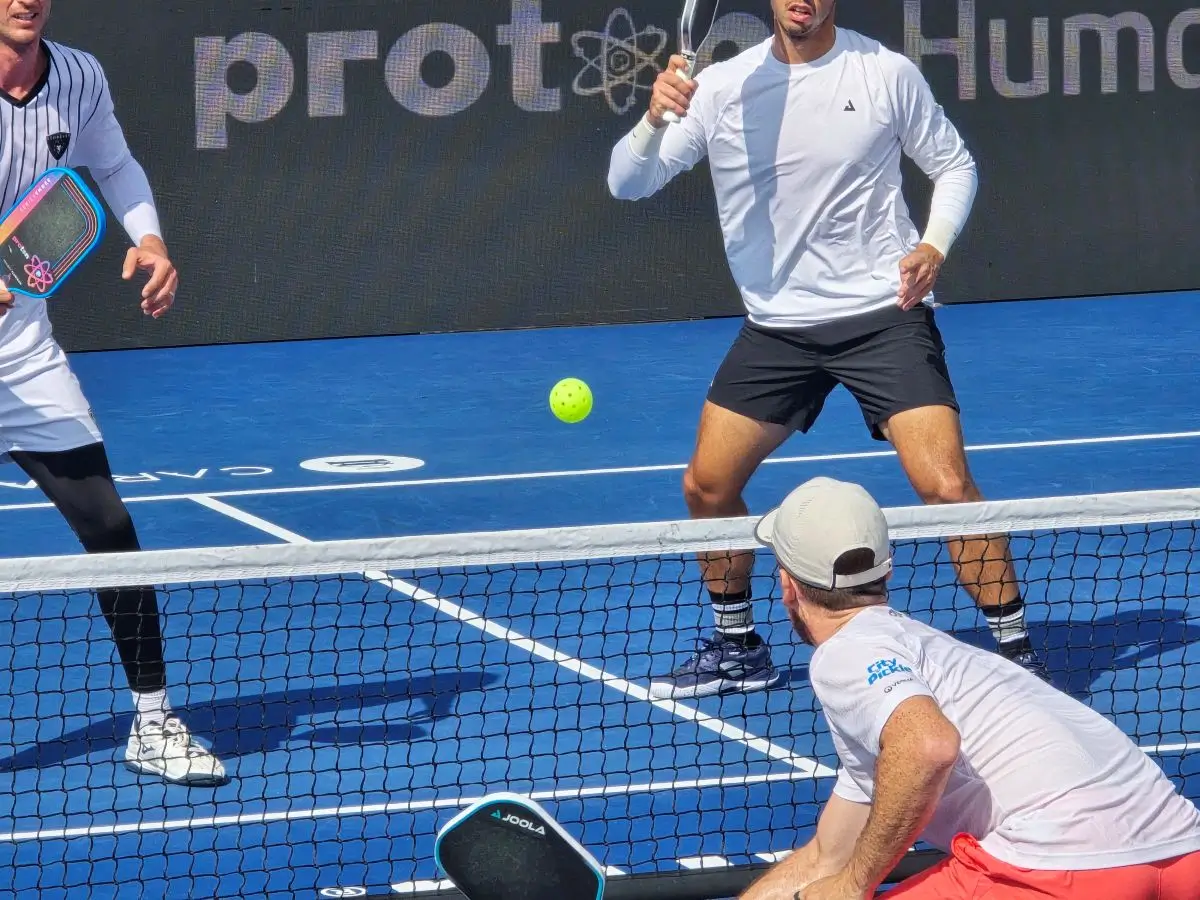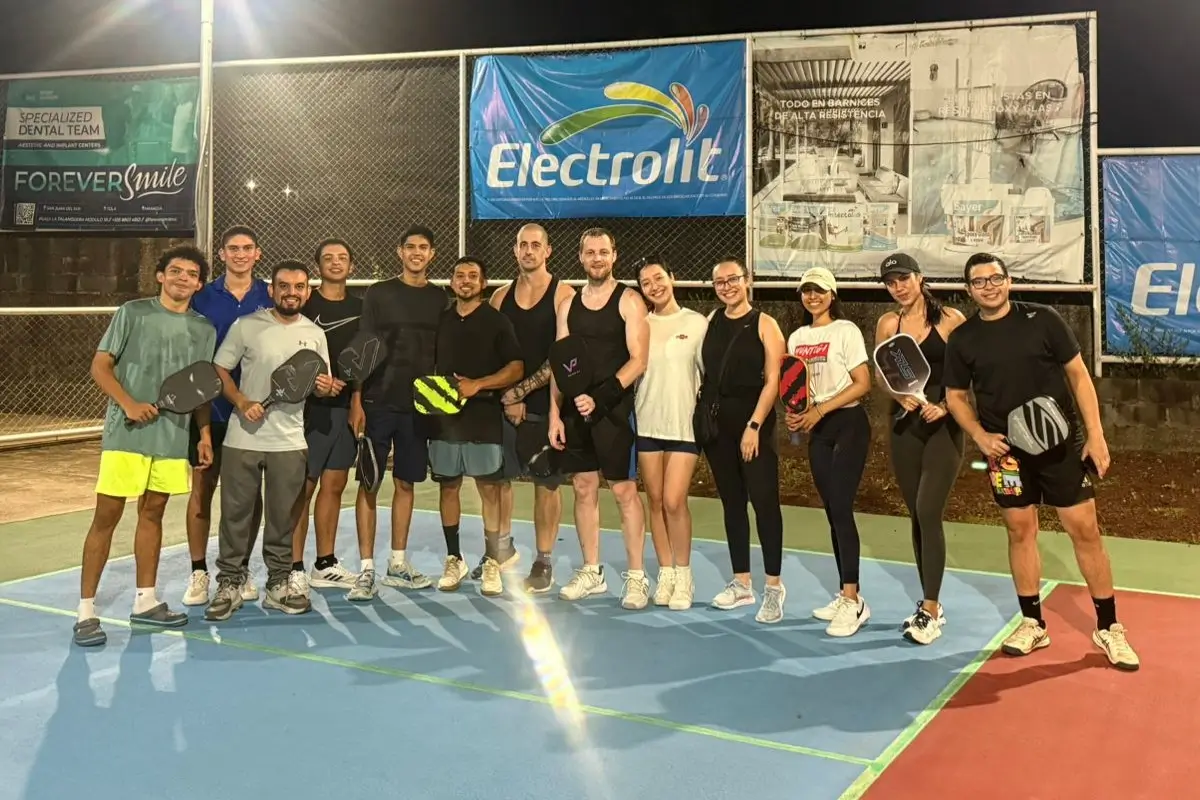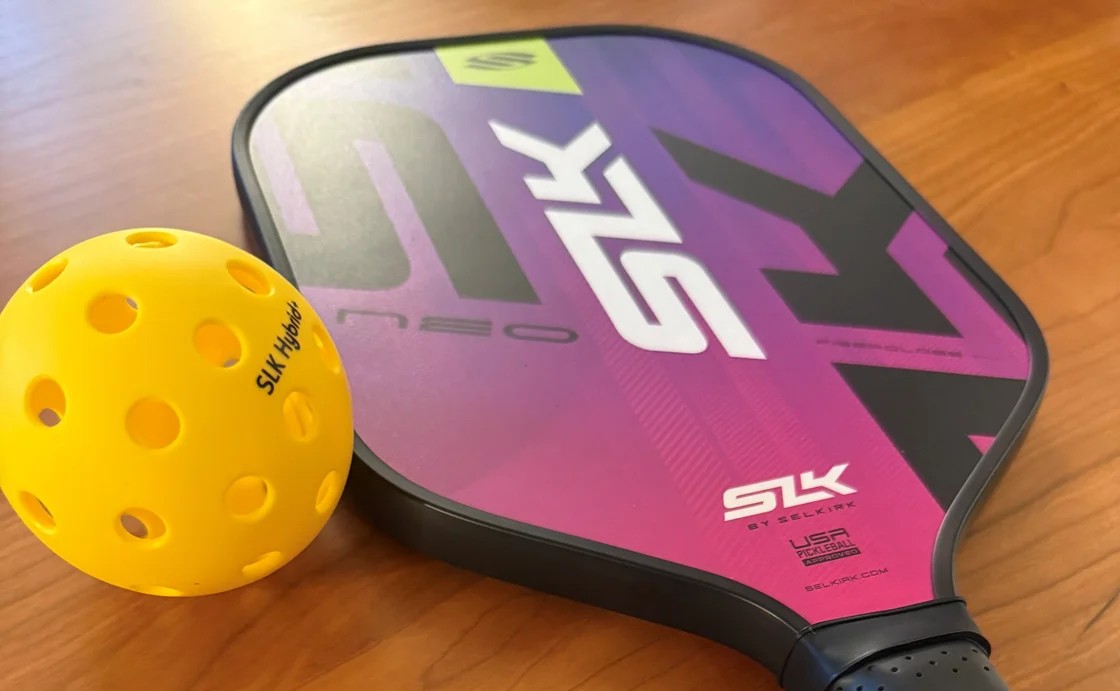Not All Sports Are Created Equal: The Case for Team Sports Over Tennis—and Why Pickleball Is the Beautiful Fusion of Both
Pickleball is more than a trending sport—it's a global movement redefining competition, community, and opportunity. In this op-ed, Geoff Bourgeois explores why team sports build better culture than tennis, how pickleball fuses the best of both worlds, and why investors should pay close attention.
.jpg)
There’s a truth I’ve been holding back for a while—a perspective that’s been percolating in my mind, forged through years of firsthand experience across multiple sports and countless hours observing the human condition in competitive environments. It’s time to say it plainly: not all sports are equal—not in their culture, not in their mental demands, not in the emotional toll they exact, and certainly not in the physical cost they inflict on the body.
Let’s take tennis. Yes, tennis is grueling. Yes, it’s ahigh-skill game. Yes, it demands incredible emotional resilience. In fact, in terms of mental and emotional challenge, I’d put tennis in the top two or three sports, hands down. The game strips you bare—no teammates to lean on, no substitutions, no one to carry you when you’re spent. You’re isolated. Every win and every loss sits squarely on your shoulders. That creates a unique mental crucible. A battlefield of the mind.
But let’s cut through the noise. I’ve heard tennis pros wax poetic about the “physical demands” of the sport—about how brutal it is to carry a giant tennis bag, navigate tournament travel, or play back-to-back matches in the sun. And with all due respect, give me a break.
I played competitive hockey for years, under semi-pro coaches, in a well-run Canadian academy that sent multiple players to the NHL. You want to talk about physical demand? Try hauling a full-size hockey bag, loaded with 50–60 lbs of gear, through a freezing parking lot at 6am. Try layering up, taping up, battling through high-speed collisions with 200-poundplayers, throwing your body into slapshots, blocking pucks, and absorbing hits that would leave most people sidelined for weeks. And then, get back up and doit again.
Hockey doesn’t just demand—it punishes. And yet, we embraced it. Why? Because of something tennis fundamentally lacks: teamwork.
Tennis is a lonely grind. It breeds hierarchy. You’re constantly looking over your shoulder, thinking about rankings, placements, pecking order. The culture is inherently zero-sum—for me to rise, someone else must fall. That’s a scarcity mindset. That’s a dog-eat-dog world.
Now contrast that with hockey. Or soccer. Or basketball. These are sports of abundance. The team wins. The team loses. You can have a bad night and your brothers pick you up. Everyone knows: if one guy breaks down, you cover for him. You lead. You gel. You sacrifice.
Team sports forge a bonded culture. A collective identity. And perhaps most importantly—they teach leadership. Not the spotlight kind. The real kind. The kind where you put others first. Where you grind for someone else’s success. Where everyone can be a hero—not by shining alone, but by rising together.
That’s what tennis can’t replicate. And it’s why the mental game of tennis, while elite, is often toxic. It’s a pressure cooker without an escape valve. There’s no locker room to laugh it off in. No line change. No sideline. No second line checking in to relieve the burden.
Now here’s where it gets interesting: enter pickleball.
Pickleball is the beautiful fusion of tennis and team sport values. It’s where individual performance meets social connectivity. Where personal mastery intersects with communal joy. It’s still intense, still strategic, still personal—but it’s not isolating.
“We’re not just building courts. We’re building culture. Pickleball is a 360-degree win—family, community, self-mastery, and global potential.”— Geoff Bourgeois
You share the court. You rotate partners. You clock paddles. You play close enough to read your opponent’s energy, their tells, their micro-movements. At the highest levels, it becomes multi-layered chess—not just checkers. And beyond that, it’s a game that supports the personal development journey. On-court lessons bleed into off-court growth. It's an experience in self-mastery.
It’s no wonder the sport exploded. Pickleball has been around for decades, but COVID was the inflection point—the catalyst that moved it from niche novelty into early majority adoption. If you study Geoffrey Moore’s Crossing the Chasm, you’ll see this is a textbook example: a market that organically reached around 22 million players worldwide—a healthy number that confirms it’s no longer an early adopter niche. It’s now firmly in the early majority phase.
And now that it’s in early majority, it’s drawing in serious investment. That capital—coupled with grassroots passion—is what will drive the next wave of expansion. From here, it’s not just possible, but entirely foreseeable, that pickleball could reach 100 to 250 million players globally in the next 5 to 10 years.
This isn’t just a sport anymore. It’s a global cultural movement. A massive industry. A generational opportunity for growth, investment, and shared prosperity.
“Pickleball is what happens when you fuse the discipline of tennis with the soul of team sports. It’s not just a game—it’s a movement.”— Geoff Bourgeois
And yet, some tennis pros are hostile toward pickleball. I get it. In 2023 alone, 10% of the world’s tennis courts—around 2,800—were converted permanently to pickleball. That’s a body blow to any institution. But let’s be honest: pickleball didn’t steal tennis courts. Former tennis players converted to pickleball and started taping lines. The infringement, if any, started from within. I doubt Ben Johns—or anyone serious about building this sport—would tape up someone else’s tennis court. Real pickleballers build quality. We invest in player experience. We raise the standard.
Let’s also call out the real threat to tennis: padel. In Europe and Latin America especially, the mass exodus of tennis players is heading toward padel—not pickleball. Padel has its own cultural gravity. If tennis wants to get defensive, it should look there first.
Pickleball, on the other hand, is a 360-degree win. Players can span generations. It crosses cultures. It brings families together. It’s inclusive, accessible, and highly scalable. The challenge now is to ensure that the culture and industry around pickleball remain transparent, principled, and authentic.
If we preserve what’s good—team values, cross-cultural joy, personal development—then pickleball doesn’t just become a great sport. It becomes a model for how sport can make society better.
So give me hockey for its brotherhood. Give me tennis for its discipline. But give me pickleball—for its beautiful fusion of both.







